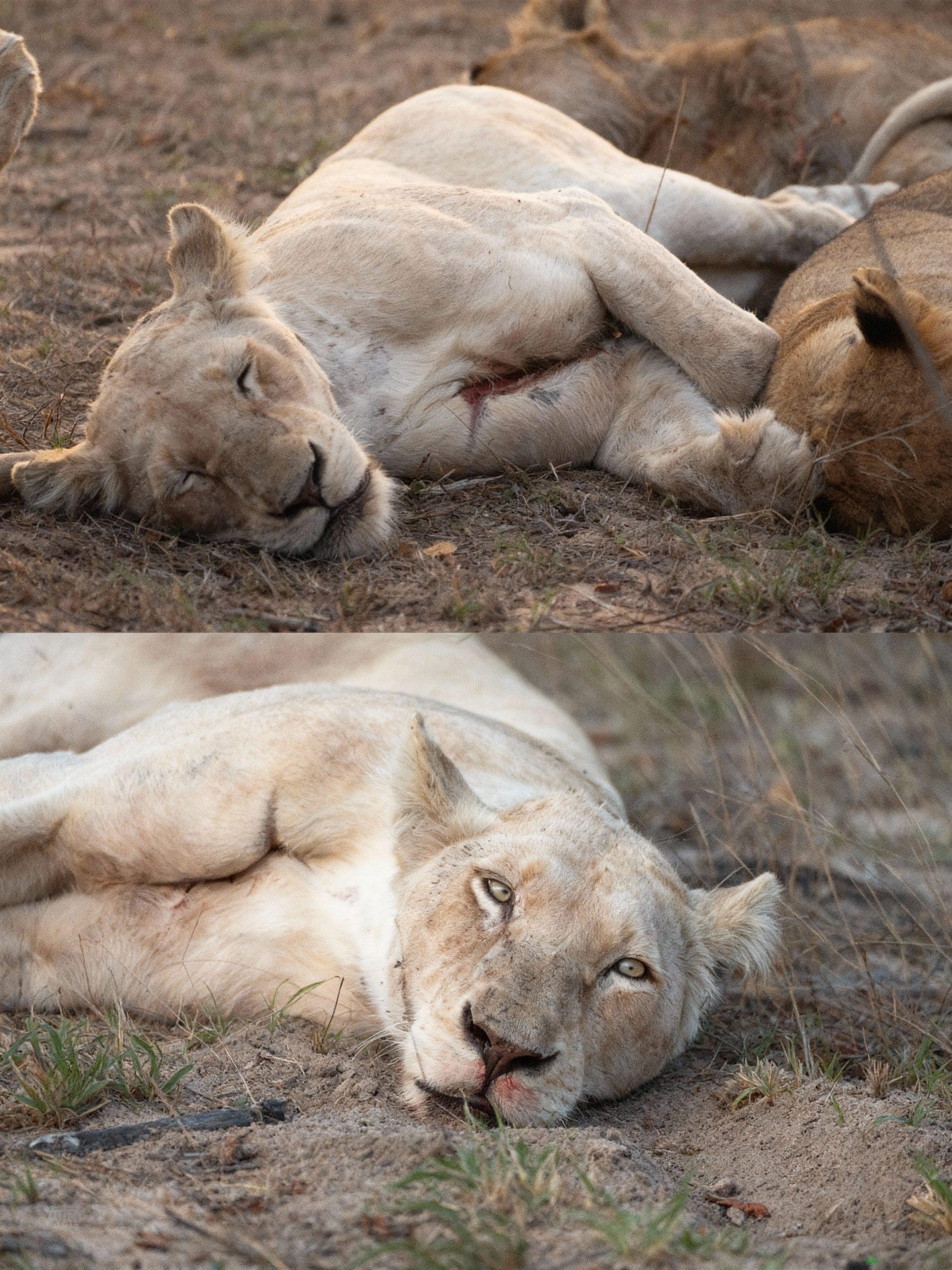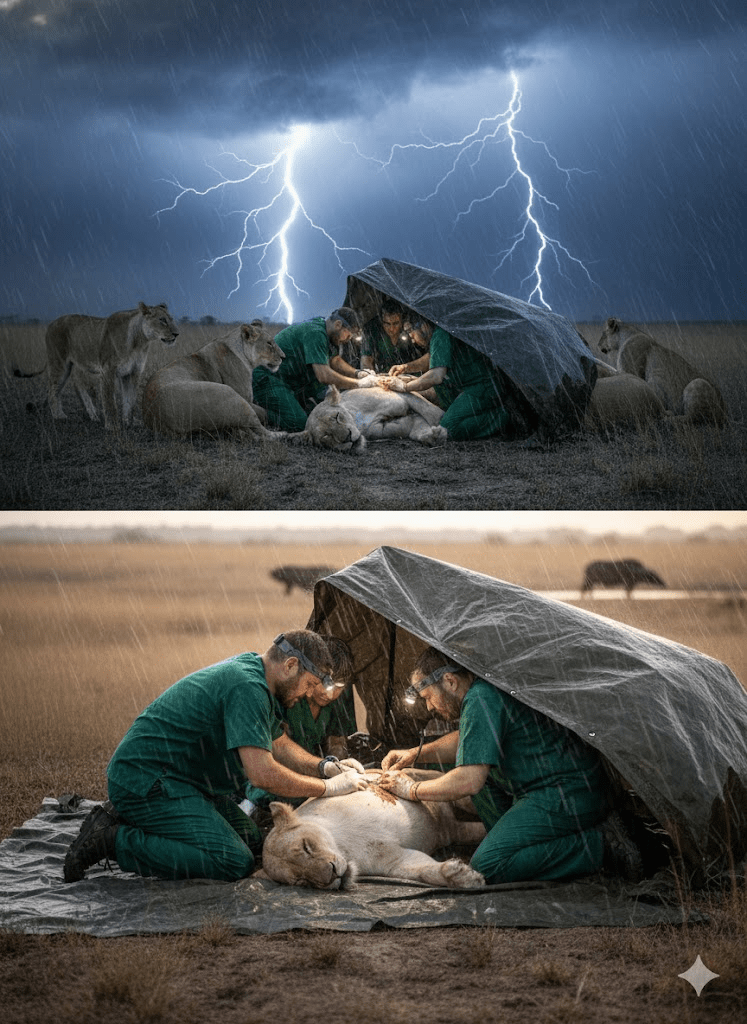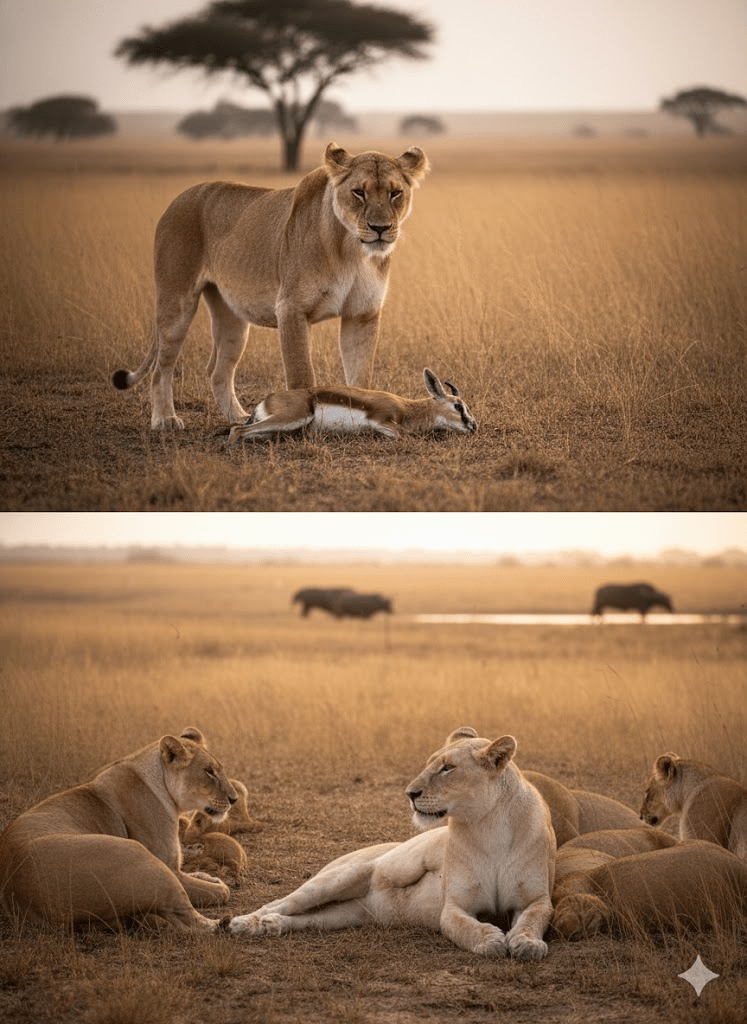The golden hour cast long shadows across the savanna as the Birmingham Pride rested, but a silent tension hung heavy in the air. A young lioness, known for her spirited hunts and vibrant presence, lay gravely wounded, her flanks still bearing the fresh, brutal testament of a buffalo’s horn. The gash, alarmingly close to a vital artery, pulsed with a dark promise of fate, sending shivers through even the most hardened members of the pride. Her breaths were shallow, each one a fragile testament to her fading strength. The other lionesses, usually boisterous and playful, now moved with a somber grace, their tawny bodies forming a protective, quiet perimeter around their fallen sister. This wasn’t merely an injury; it was a crisis that threatened to unravel the very fabric of their familial unit, a stark reminder of the unforgiving wild where life and death dance on the edge of a blade. The question wasn’t if she would survive, but for how long, and what it would cost the pride to keep her flicker of life alive.

Conservation teams, alerted by tracking collars, arrived with a grim determination. The savanna, usually a stage for raw power, transformed into an emergency ward. The sedatives worked quickly, allowing veterinarians to approach the immense predator. The wound was worse than anticipated, a deep laceration that required immediate and meticulous attention. As they worked under the fading light, an unexpected development arose – a sudden, violent electrical storm erupted, turning the sky into a maelstrom of crackling energy. Rain lashed down, threatening to contaminate the sterile field and complicate the delicate procedure, forcing the team to construct a makeshift shelter with incredible speed and ingenuity, battling not just the injury but the raging elements.

The immediate crisis averted, the next 48 hours were a treacherous tightrope walk. Infection, a silent and deadly killer, loomed large. The lioness, now named ‘Asha’ – meaning hope – by the conservationists, was monitored around the clock. Her pride, though initially wary of the human presence, seemed to understand the gravity of the situation. In a surprising display of instinct and cooperation, they adjusted their hunting patterns. One morning, the team observed a smaller, younger lioness, usually less successful in solo hunts, bringing down a gazelle near Asha’s resting place. It was a clear, unambiguous act of support, ensuring Asha had access to vital nutrients without expending precious energy.

Over the next few weeks, Asha’s recovery was a slow, arduous journey marked by small, triumphant steps. Each day brought a little more strength, a little more light back into her eyes. However, a new challenge emerged when a rival pride, sensing weakness, began to encroach on Birmingham Pride’s territory. The tension escalated, threatening to force the pride to move, a journey Asha was not yet strong enough to undertake. In an astonishing turn of events, the lead male of the Birmingham Pride, usually aloof, took a proactive stance. He led a series of strategic roars and territorial displays, creating a formidable presence that deterred the rivals, giving Asha the critical time she needed to heal without the added stress of a forced migration.







